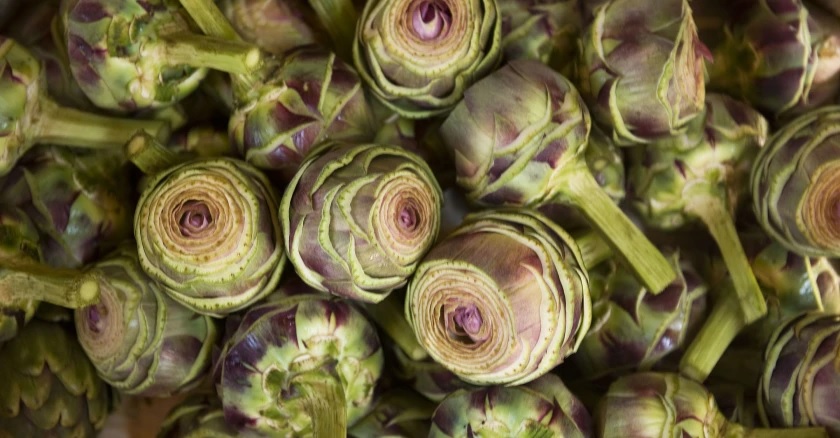When March rolls around in the Eternal City, a deep-fried artichoke dish sets off a feeding frenzy. To understand the Romans’ obsession with carciofi alla Giudia, you need to, well, do as the Romans do.

By Susan Van Allen for Afar – It’s a cozy Monday night at Ristorante La Torricella in Rome’s Testaccio neighborhood. As I peruse the menu, Augusto D’Alfonsi, the restaurant’s owner for 40 years, approaches my table, holding up the pride of Rome’s spring season: an artichoke. “This is a gift from God,” D’Alfonsi says, stroking the artichoke’s stem as though it’s the thigh of a lovely signorina. “Carciofi, carciofi…,” he sighs: car-CHO-fee, car-CHO-fee. Inspired, I order an antipasto of carciofi alla Giudia, an artichoke that has been flattened and deep-fried, transformed into a crisp, golden flower.
My dinner companion and cooking teacher, Daniela del Balzo, smiles with approval when the antipasto arrives, and we tear into its crunchy leaves, relishing the earthy, nutty flavor. “Romans have had a love affair with artichokes for thousands of years,” says Daniela. She explains that back in toga-wearing days, the leafy thistles were believed to be powerful aphrodisiacs. Women were long forbidden to eat them, but Catherine de’ Medici, infamous for her insatiable appetites, took some with her to France in the mid-16th century when she married Henry II, and her artichoke gorging caused quite the scandal.
In Daniela’s cooking class, I learned the carciofi alla Giudia essentials. The lesson began at the Testaccio market, where, from late February to early May, stalls overflow with carciofi Romaneschi, a small, round, purple-tinged artichoke that happens to be the best variety for making carciofi alla Giudia. Though traditional eateries all over the city prepare them well, every Roman (including Daniela) believes that to have the most authentic experience of this specialty, you must go to its place of origin—Rome’s Jewish ghetto.


